You may not find this terribly rewarding unless you're included here, so this is a good time for casual and random browsers to turn back before they get too caught up in the sweep and majesty of the proceedings and can't let go.
No visit to Lisbon is complete without a stop-in at Sintra
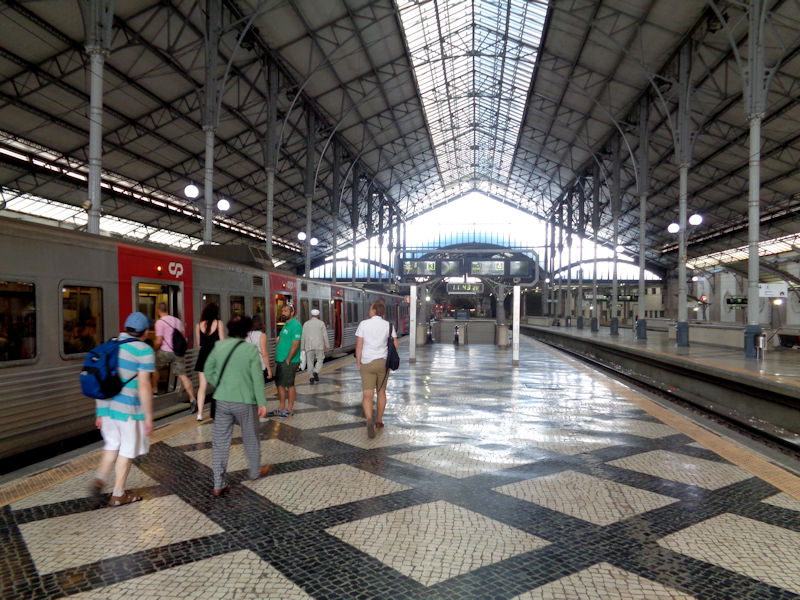
All aboard from Lisbon's Rossio rail station, 29 October 2017, bound for Sintra near the coast.
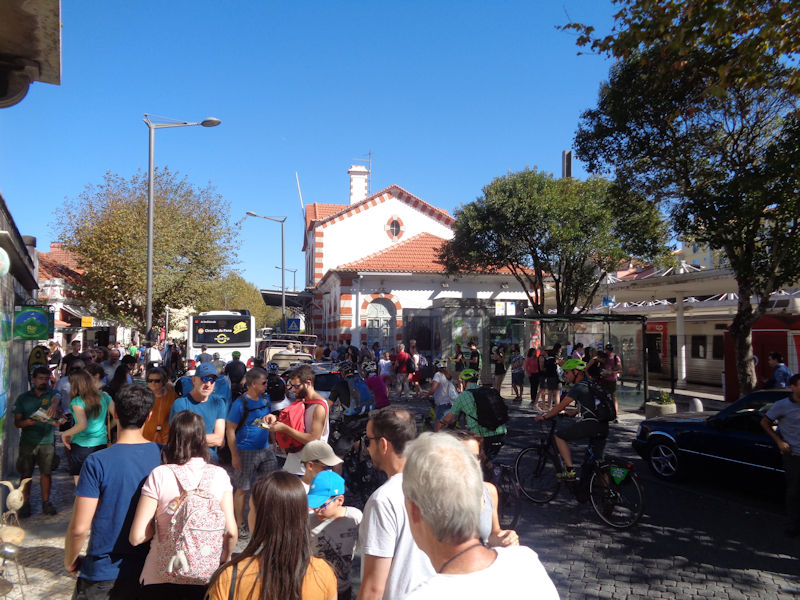
The train station in Sintra, about 45 minutes' ride from Lisbon Rossio. 'Sintra' the municipality applies to two cities and a number of villages, with a total population of nearly 400,000, but we are focused on the village of Sintra proper, on the eastern edge of the Parque Natural de Sintra-Cascais, a nature reserve that extends about 8km due west to the ocean, and as much as 14km both north and south along the Atlantic coast.

From the train station, we're passing the city hall (completed in 1910) and setting out to march about 2km to the touristic centre of Sintra.

A cute little tourist road-train passes by. There are Paleo- and Neolithic remains in the area, but the present village has remains indicating a Roman presence from the 1st or 2nd century BC to the 5th century AD, with a Roman road from the neighborhood roughly 25km to the Roman municipium of Olisipo (Lisbon).
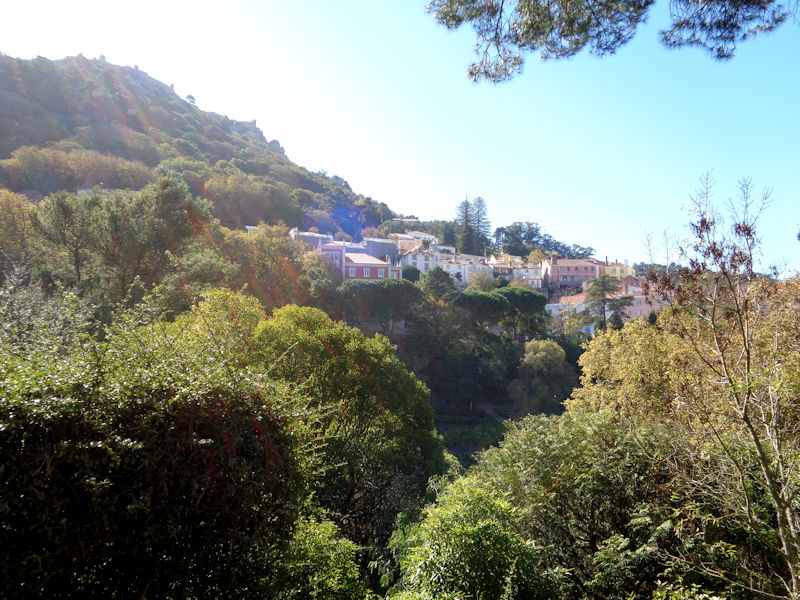
Our walk proceeds along the 'Volta Duche' around a little valley, looking across at the upper parts of Sintra village (and a squint at the hilltop Moorish Castle at the top left).
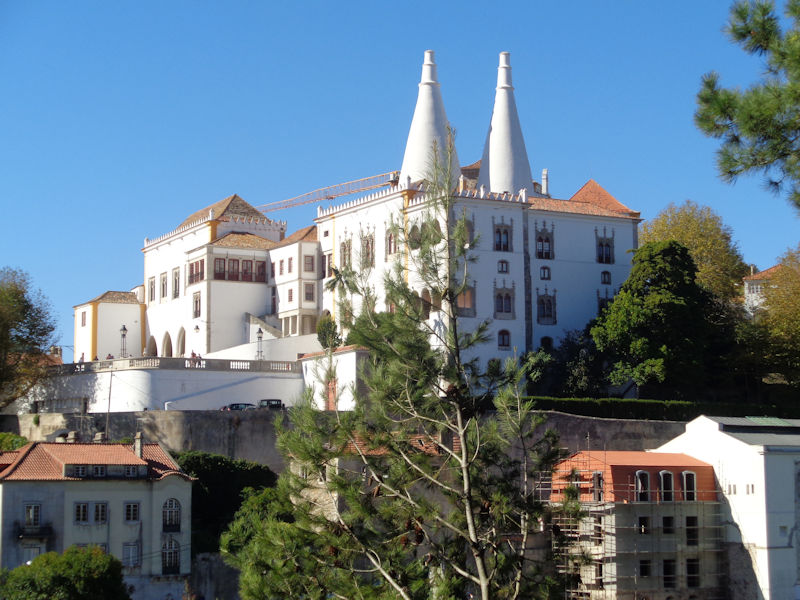
A zoom view of the impressive Palácio Nacional de Sintra across the way
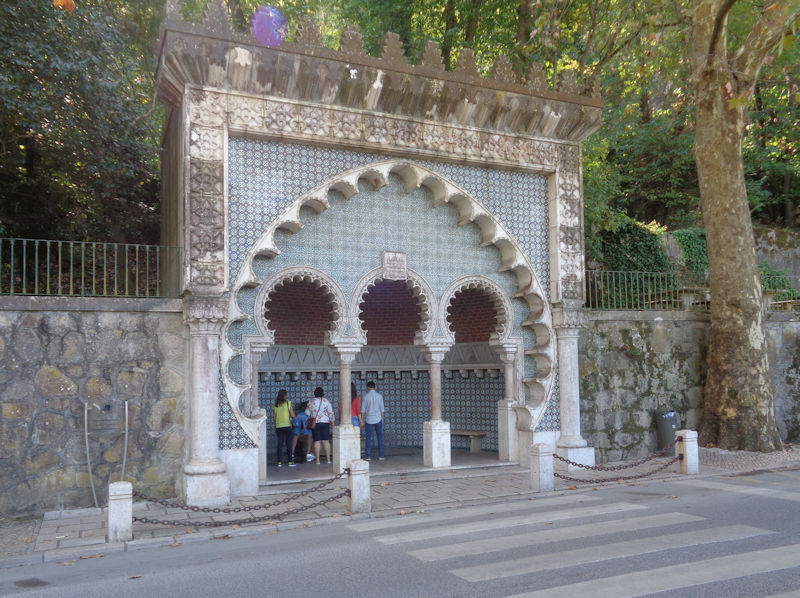
Along our route of march, this is the Fonte Mourisca or Moorish fountain, built in 1922 but in the Moorish manner with horseshoe arches & Mudéjar-style tiles. The Mudéjar culture of the Reconquista period refers to the architecture and decorative styles of the resident Moors who remained in place after the Christian conquests but did not convert to Christianity, which was quite possible until the final expulsion of Moslems from the Iberian peninsula beginning in 1609.

The National Palace with its twin rocket launcher towers. Following the Umayyad Moorish conquest of Iberia in the early 8th century, there were two castles here -- one was a serious hilltop fortress just above the village to the south, and the other, this one, was a residence for the various caliphate governors and Taifa rulers until Lisbon and environs were conquered by Afonso Henriques in the mid-12th century.

Approaching the central square of Sintra village, the Praça República

A lovely tourist road train in the central square (we collect photos of European road trains)
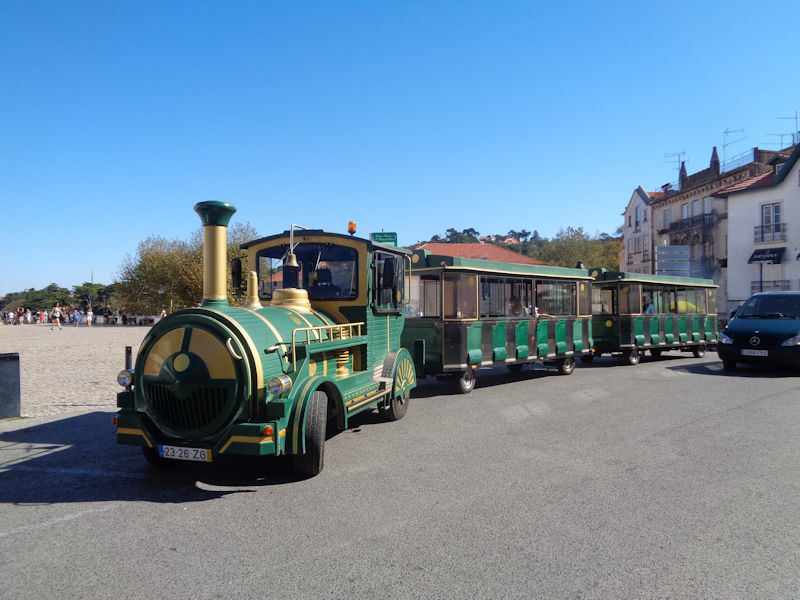
It's clearly not a classic Dotto; we'll look into this later.
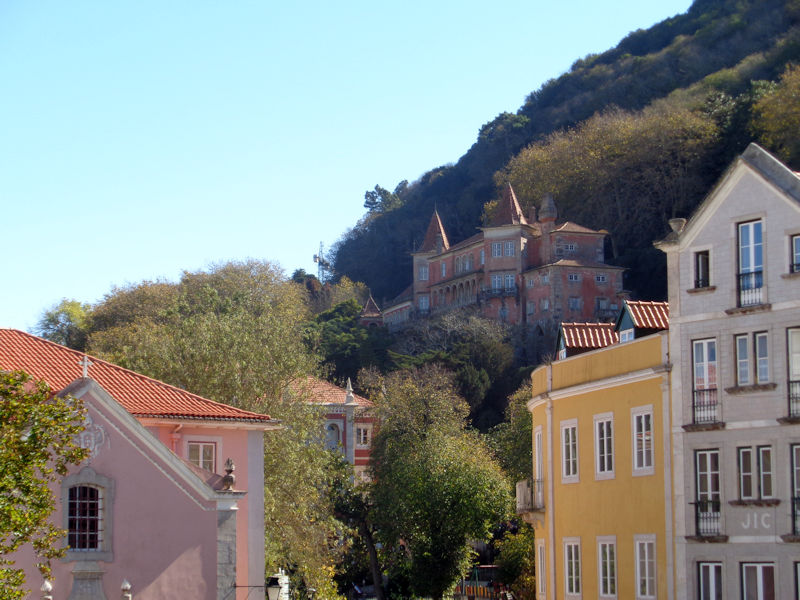
There are many palaces and palace-style buildings in Sintra village, long a prestige spot for the elites of Lisbon.
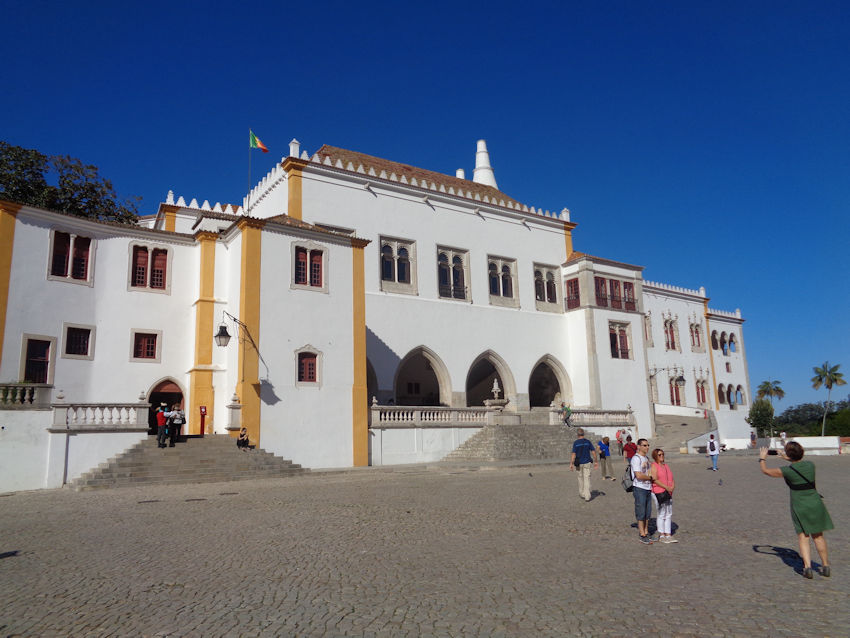
The Palácio Nacional de Sintra -- Afonso Henriques, the first King of Portugal, took this as his royal residence when he was in the area, but nothing from the Moorish or early royal periods survives. In fact, the earliest functioning part of the present palace is the chapel, created during the time of King Dinis I in the early 1300s.
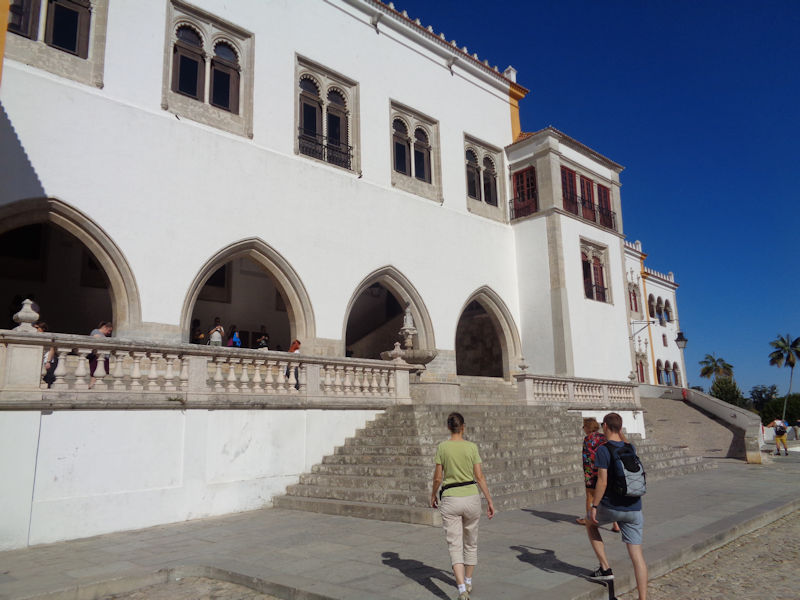
In earlier times, this flat piazza in front of the palace façade, the Largo Rainha Dona Amélia, was enclosed with a wall and buildings. The piazza is named for Amélia of Orleans, the last queen consort of Portugal and dowager queen after her husband, King Carlos I, was assassinated in Lisbon in 1908. She left Portugal when her son King Manuel II was deposed by the military in 1910 and lived in France until her death in 1951.
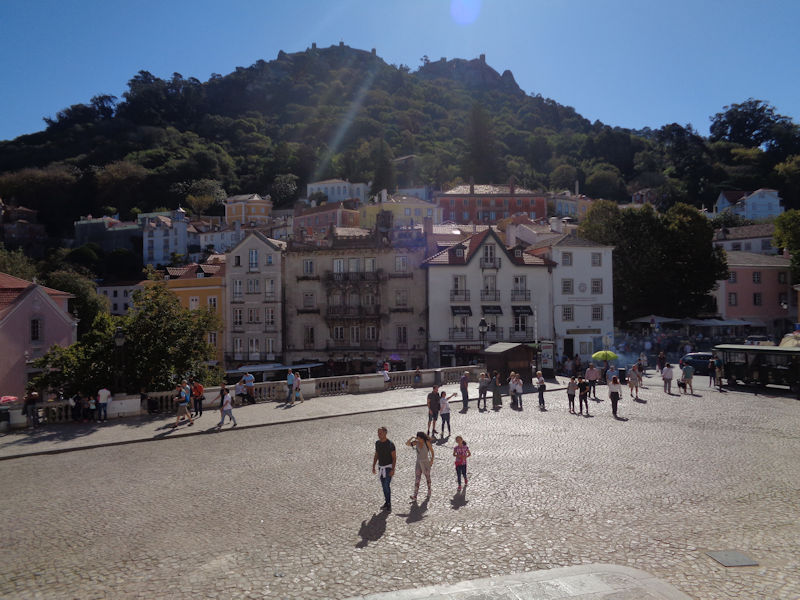
A view from the front porch of the better part of the village and, on the hilltop, the remains of the 'Moorish Castle'.
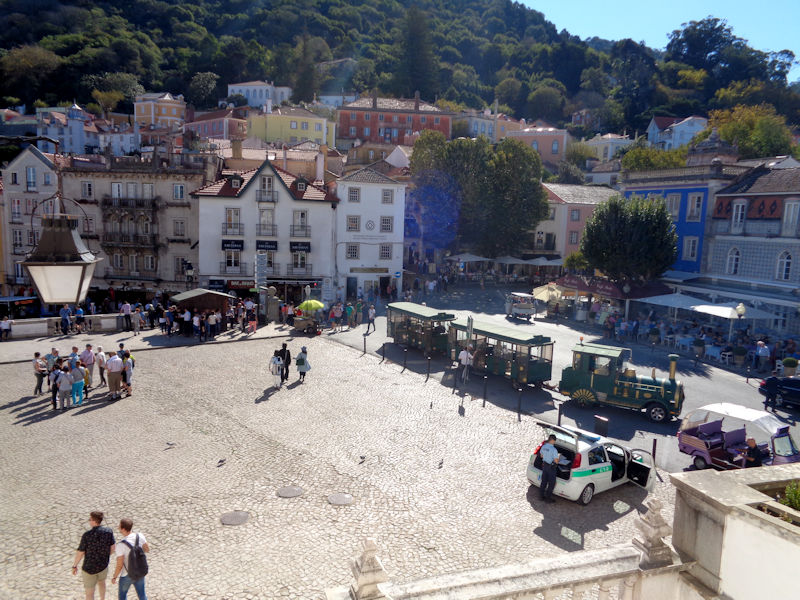
There were three great periods of enlargement and renovation by royal inhabitants during their periodic sojourns in residence here -- that under King Dinis I (r. 1279-1325), King João or John I (r. 1385-1433), and King Manuel I (r. 1495-1521), with his new 'Ala Manuelina' or Manuel's Wing.

We're through the ticket office and off to the races.
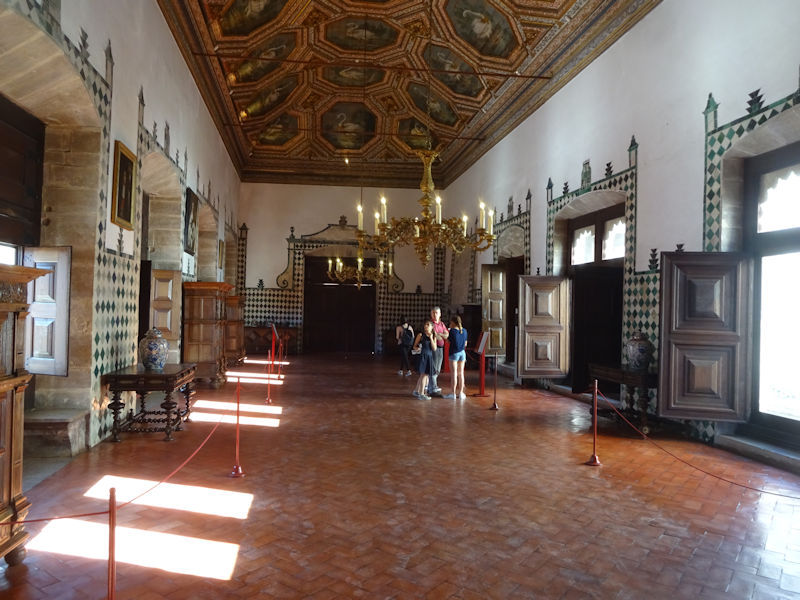
First, the Swan Room, the main meeting and banquet hall in the palace, built in the reign of King John I in the early 15th century.
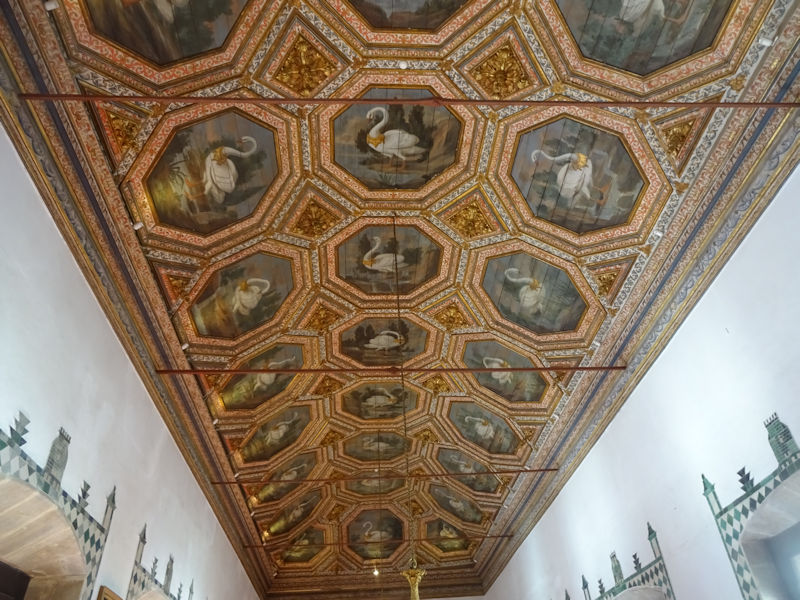
The Swans were laid on during the 'Manueline period' of major restorations and additions to the palace in the early 16th century.

The central courtyard or patio of King João I's palace, at the heart of the present complex.
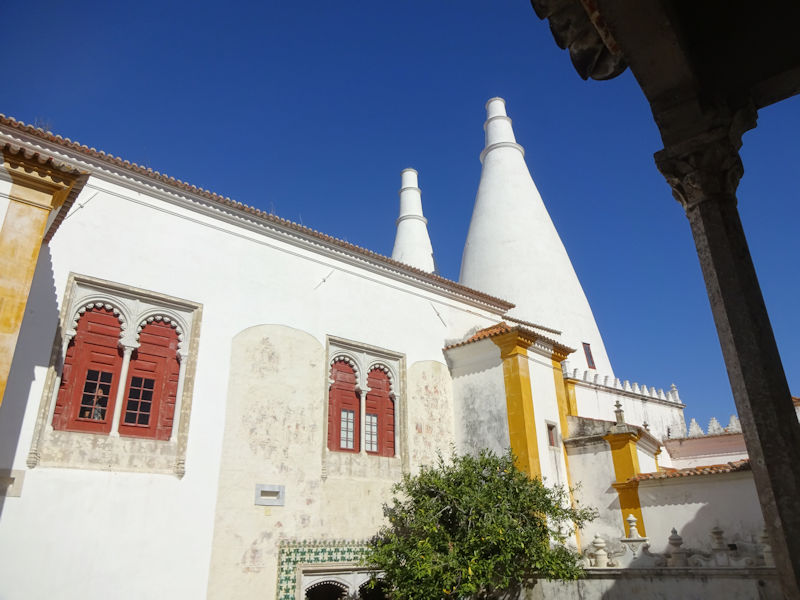
The strange rocket launchers seen from the central patio
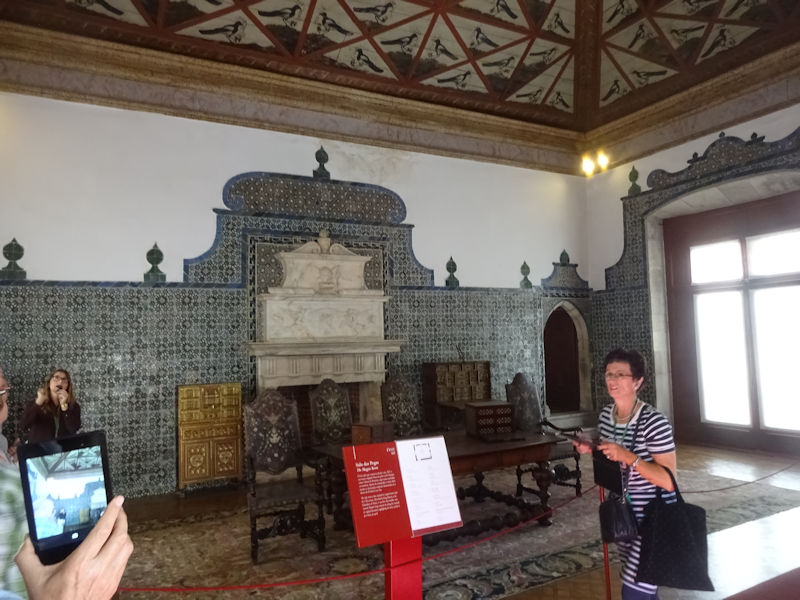
The Magpie Room (cf. the birds on the ceiling), a receiving room for visiting dignitaries and ambassadors (in legend at least, the Queen Philippa of Lancaster caught King John kissing one of her ladies, provoking gossip, and he had the magpies put up as a reminder to discourage loose talk).
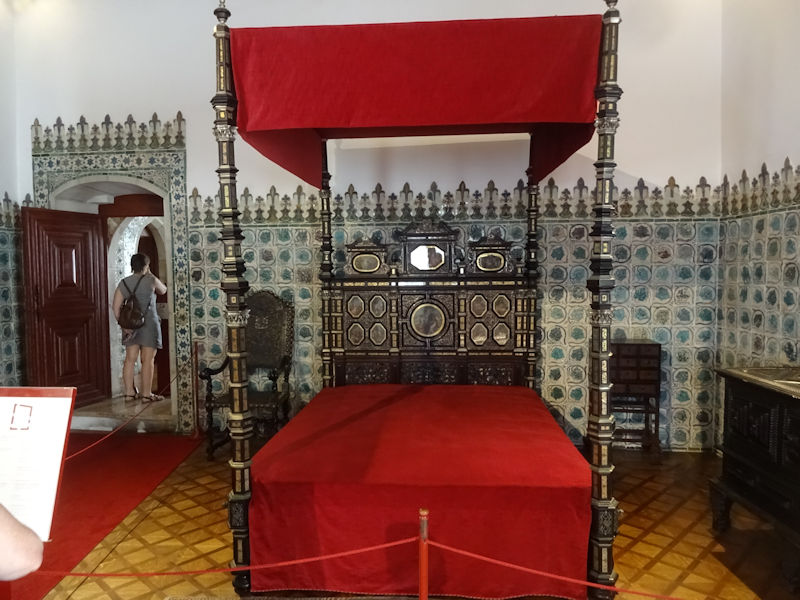
King Sebastião's room, named for the king who, at the age of 24, decided that he needed to lead a Crusade to Morocco, and died there in 1578, without heirs, opening the door for Philip II of Spain's annexation of the country which lasted until 1640.
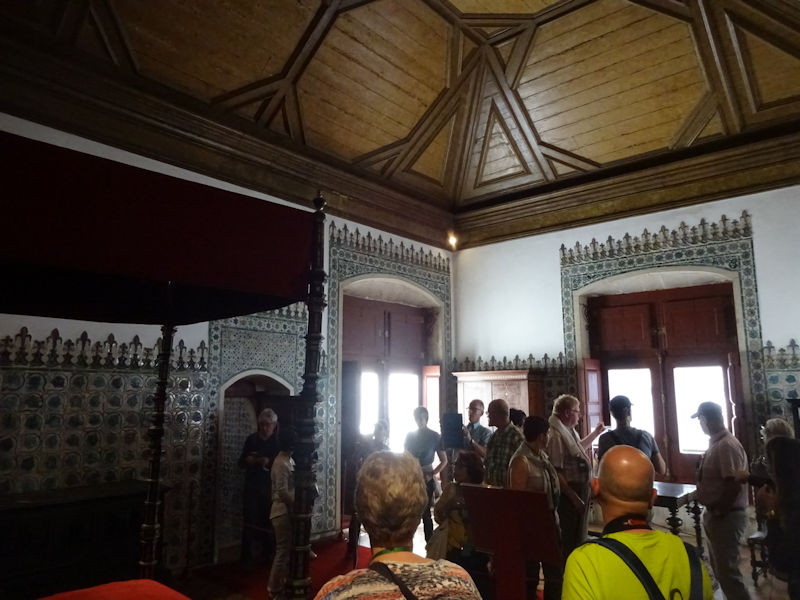
Sebastian's room -- it was said that the king had Luis de Camões read his massive epic poem The Lusiads to him on the veranda just outside.
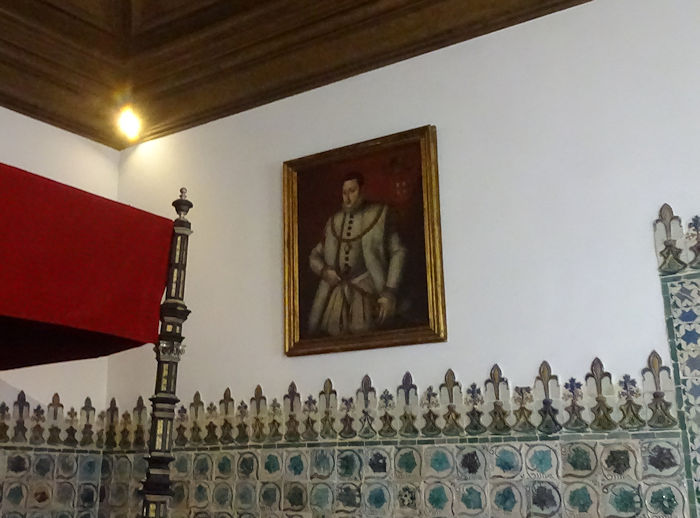
Sebastian I (1554-1578)

The Julius Caesar room (from the scene from Caesar's life on the 16th century Flemish tapestry)
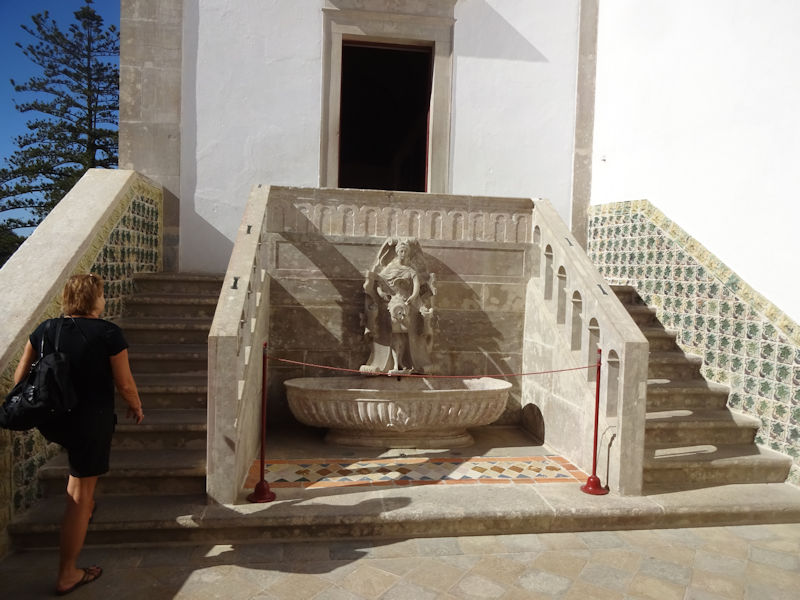
Diana's Patio leading to the . . .

The Galley Room (from paintings along the barrel vaulted ceiling)
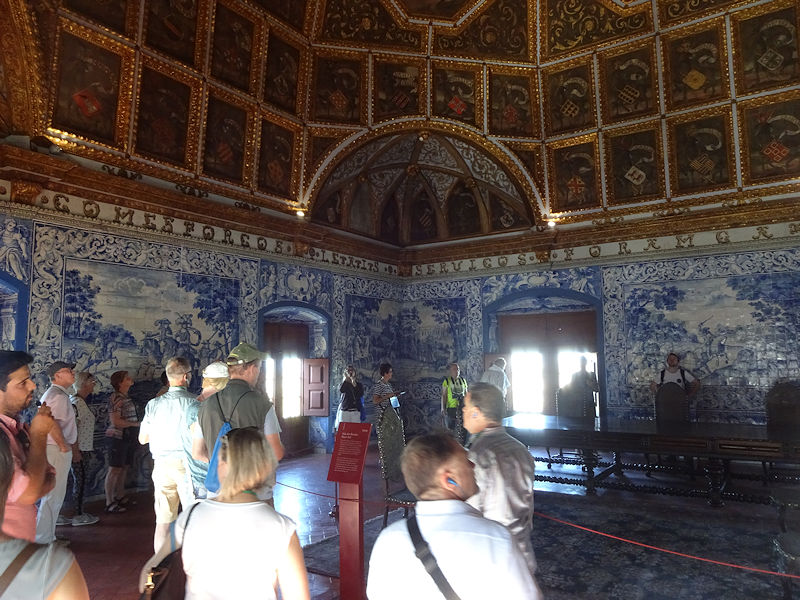
The Heraldry Room or 'Blazons Hall' (Sala dos Brasões) is an addition from the third period of renovation and improvement, that under Manuel I in the early 16th century.

There is a subtle message in the decoration -- the royal coat of arms is prominently displayed at the centre of the ceiling . . .
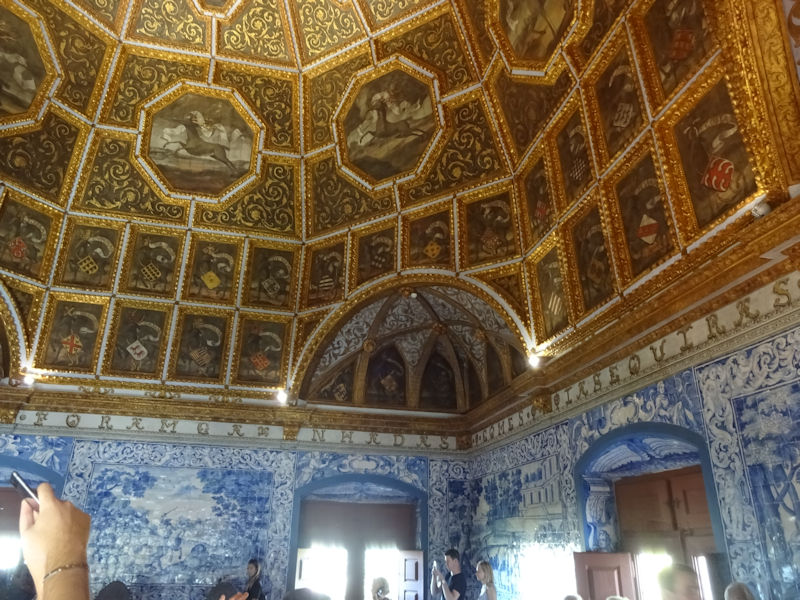
. . . and grouped around it are the coats of arms of the 72 most important families in the country. All basically satellites of the royal dynasty.
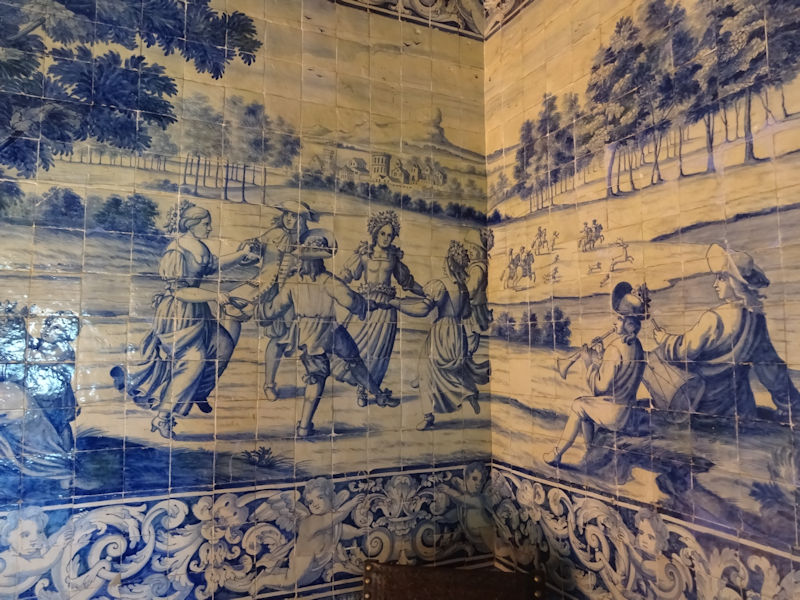
King Manuel, in his own new wing at the far end of the palace and throughout the older parts as well, redecorated with the 'azuelos' decorative, glazed ceramic tiles he had seen on a trip to Seville, part of a revival of the Islamic Mudéjar style at the time, and they were made for him in Seville. The Islamic-influenced motifs were normally geometric patterns, though, and these with hunting and dancing scenes date from the 18th century.
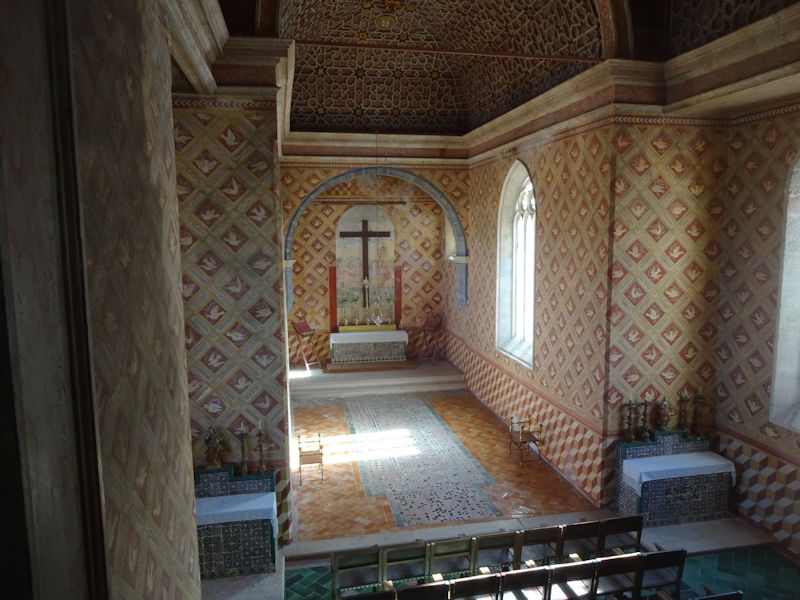
The Palatine Chapel, founded by King Dinis I in the first phase of renovation in the early 14th century. The tiles show doves with olive branches, signifying the Holy Spirit. According to the little flyer that comes with our tickets, 'The tiled floor and wooden ceiling are among the oldest examples of Mudéjar work in Portugal."
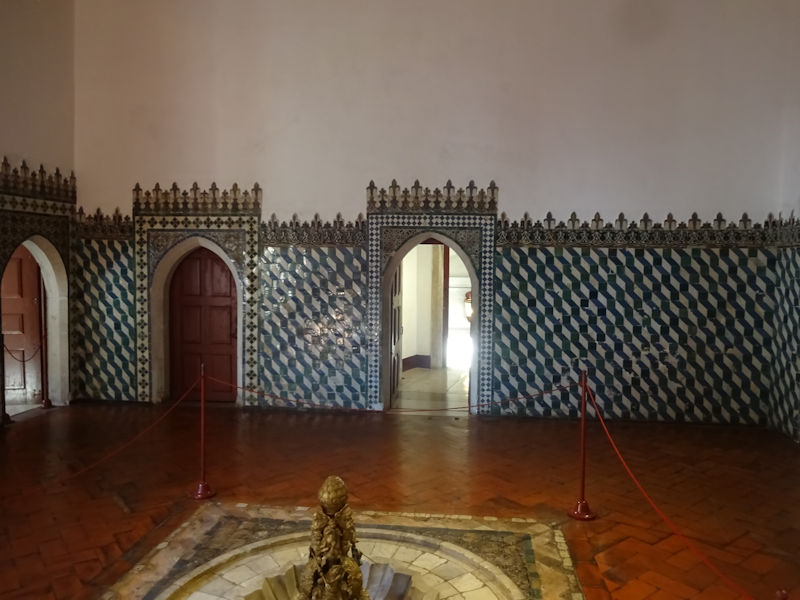
The Arab Room with its Manueline Mudéjar-style tiles from Seville, but probably originally King João I's bedroom, with a nice fountain in the middle.

Next stop: the kitchens, suitable for very big parties, and bearing the coats of arms of Portugal and of Savoy, for the last royal actually to reside in the palace, Maria Pia of Savoy (1847-1911), daughter of Victor Emmanuel II of Italy and queen consort of King Luis I, and mother of the deposed Carlos I.

The kitchen was built in the time of King João I: perfect for huge banquets, not very suitable if the king only wanted a small omelette and green salad by himself.
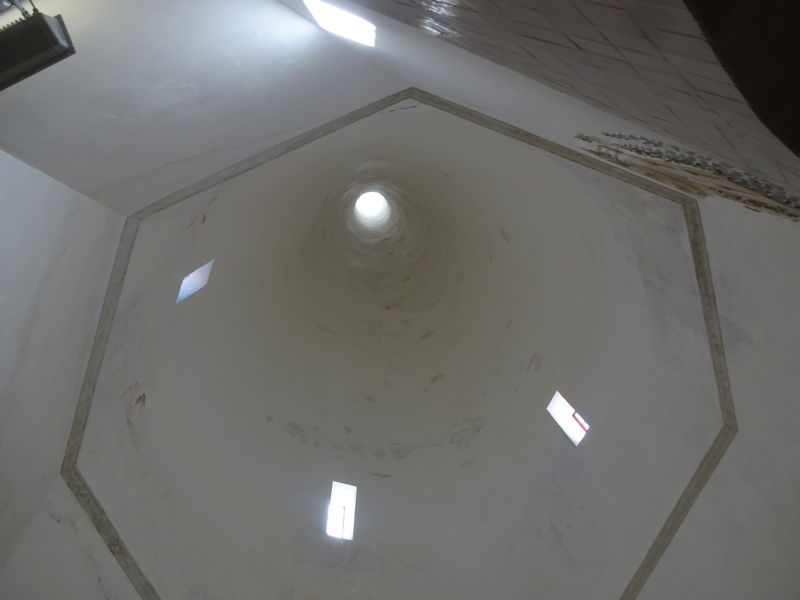
The rocket launchers -- two 33-meter chimneys to deal with the kitchen working at full blast for a banquet on a day in mid-August

The Sala Manuelina or Manueline Hall, the main hall of the residential wing added by King Manuel in the early 16th century, and restored in the 1930s.
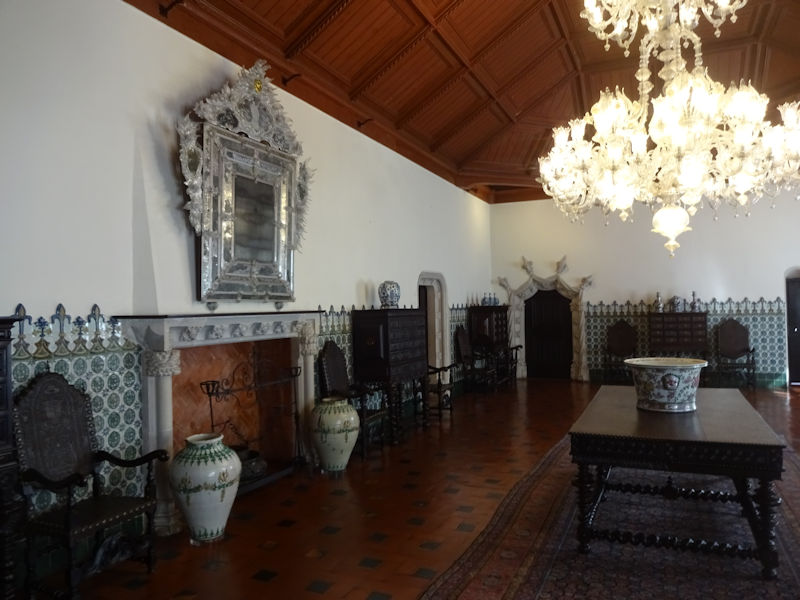
The same, with all the 'azulejos' tiles from Seville; the 19th century mirror is from Murano.

The Water Grotto near the central courtyard, with the deeply irritating lady who muscled her way to the front of every room with her huge, expensive camera, and stayed there.
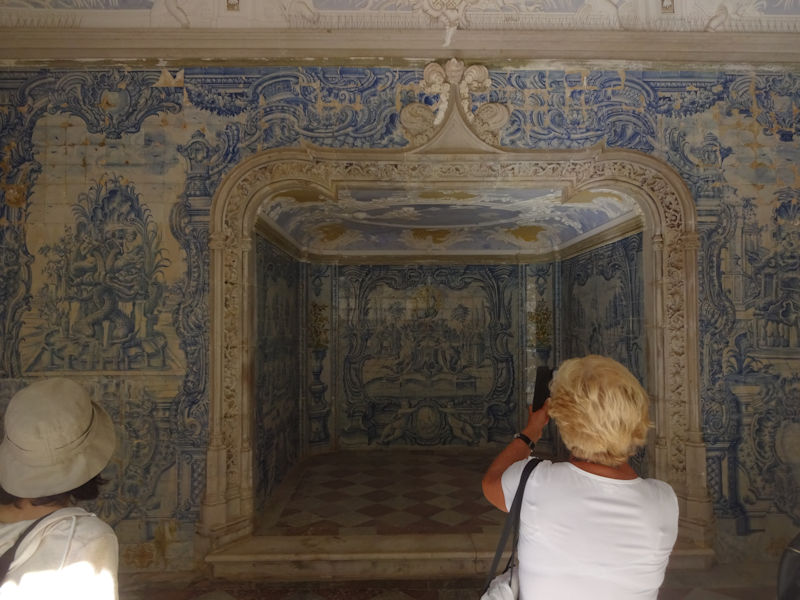
That's the same hairdo but a different lady (cf. iPhone), similarly memorializing the 18th century tiles.
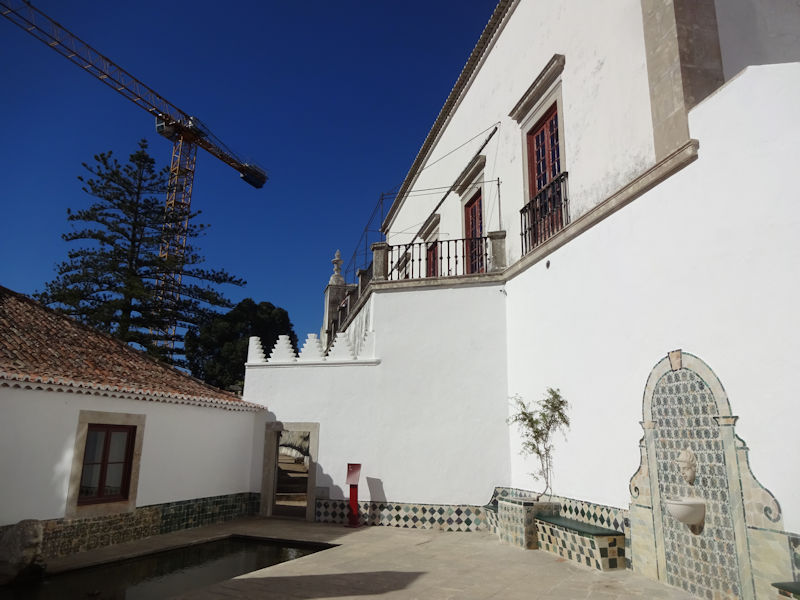
The Lion's Patio with an entrance to the gardens and, behind us, the way out
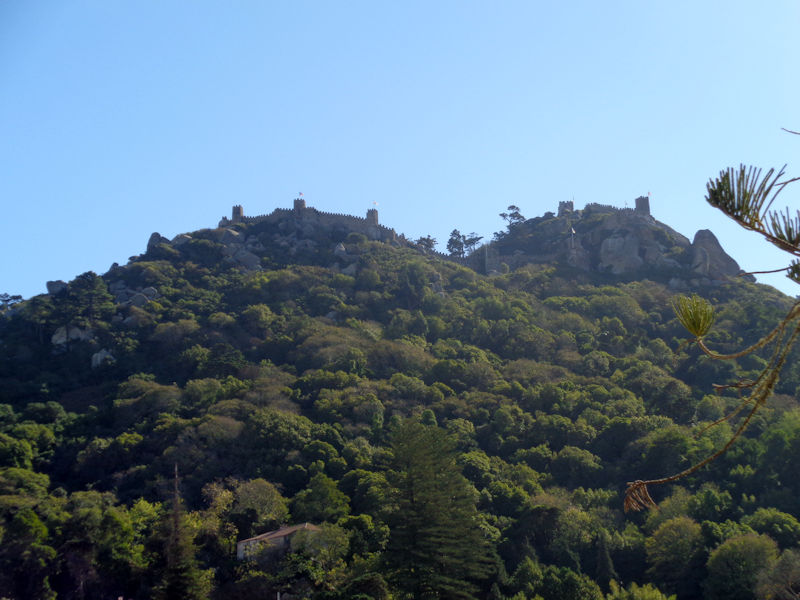
A good view of the Castelo dos Mouros, or Moorish Castle, on the hilltop, dating from the 8th or 9th century and taken by Afonso Henriques after the fall of Lisbon in 1147. The outer walls remain and have been restored several times to make them suitable for tourism -- but we hadn't left time to visit it, nor were we able to visit the other great missed opportunity in Sintra, the Palácio da Pena, a 19th century Romantic-style palace built over a medieval predecessor that was severely damaged in the earthquake of 1755, which lies on the next hilltop behind this one, 500m to the south, and is (like the National Palace) a UNESCO World Heritage culture property.

The Kitchen Garden . . .
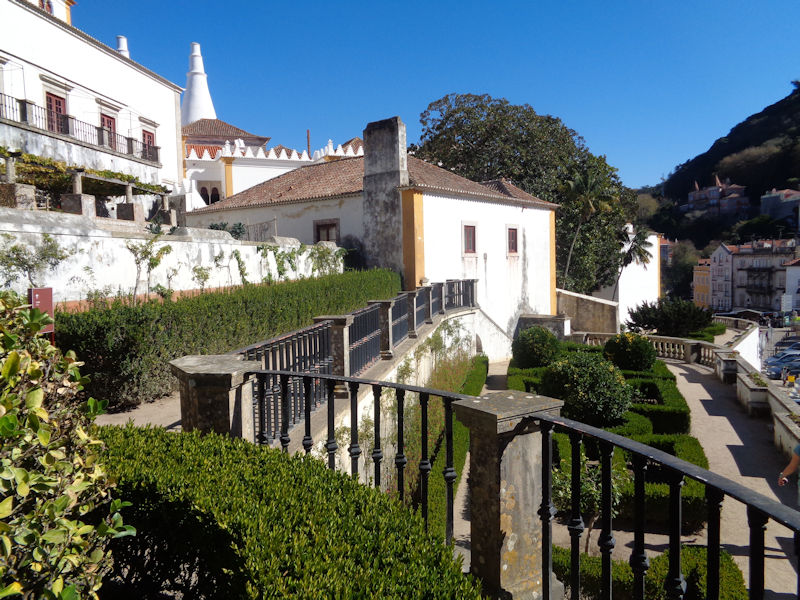
. . . leading down to the 'Araucária Garden'
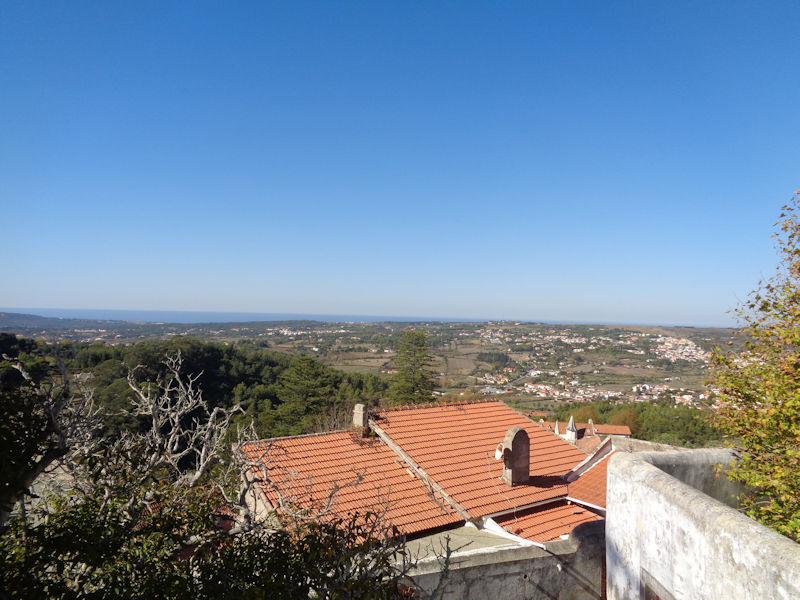
The Atlantic in the distance (ca. 8k)
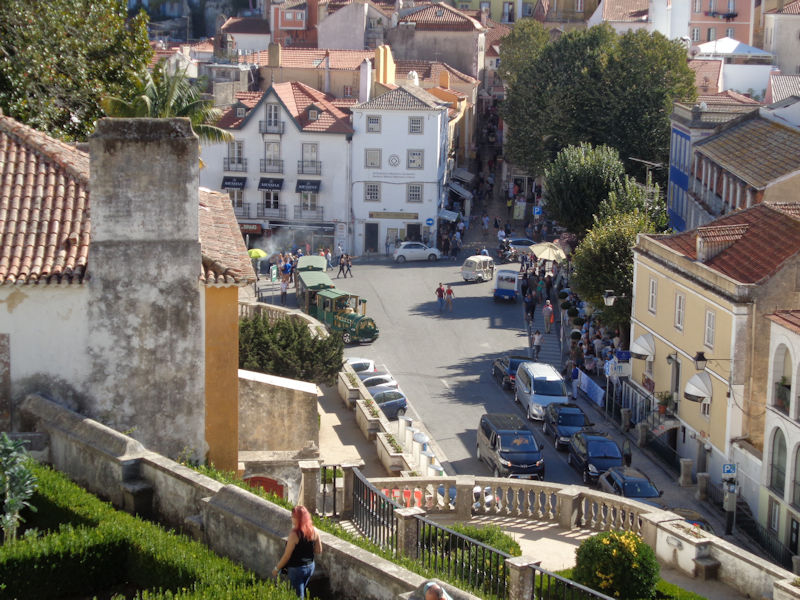
The Praça República
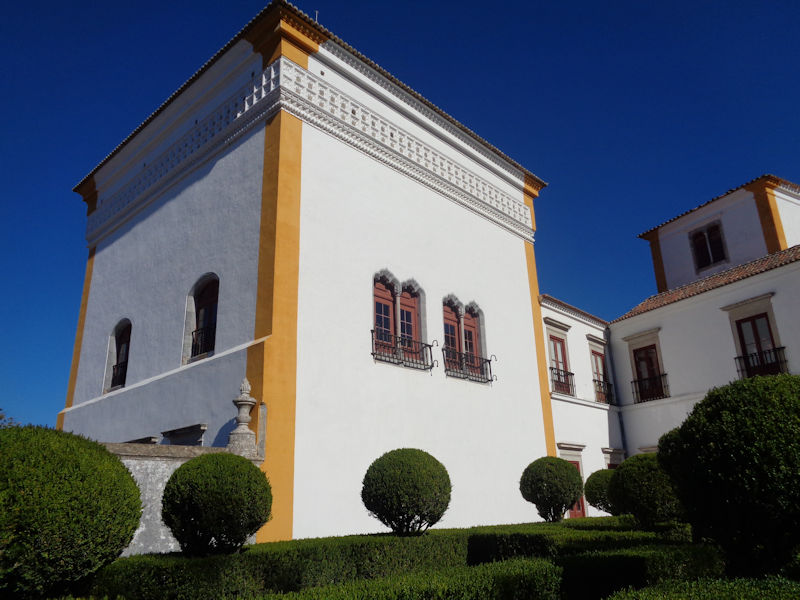
In the top-level 'Prince's Garden' with the Heraldry Room looming above

And the Way Out
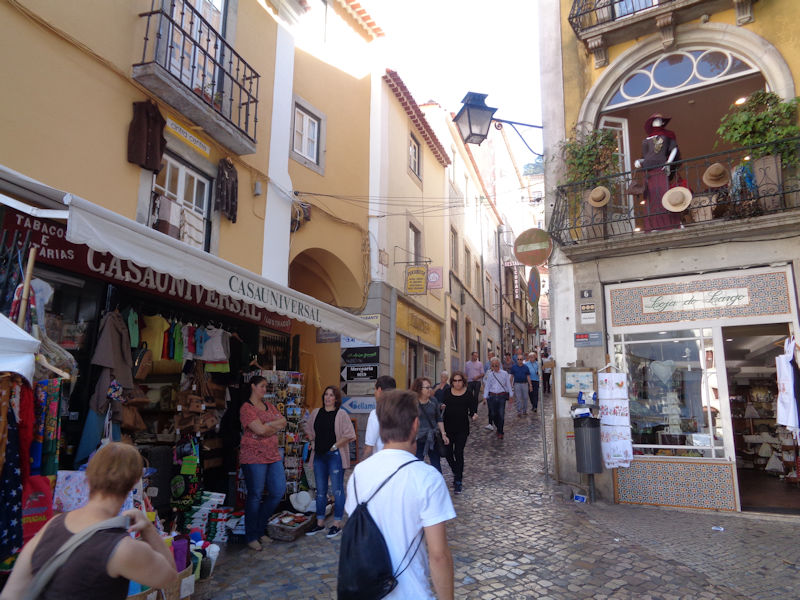
Sintra Walkabout
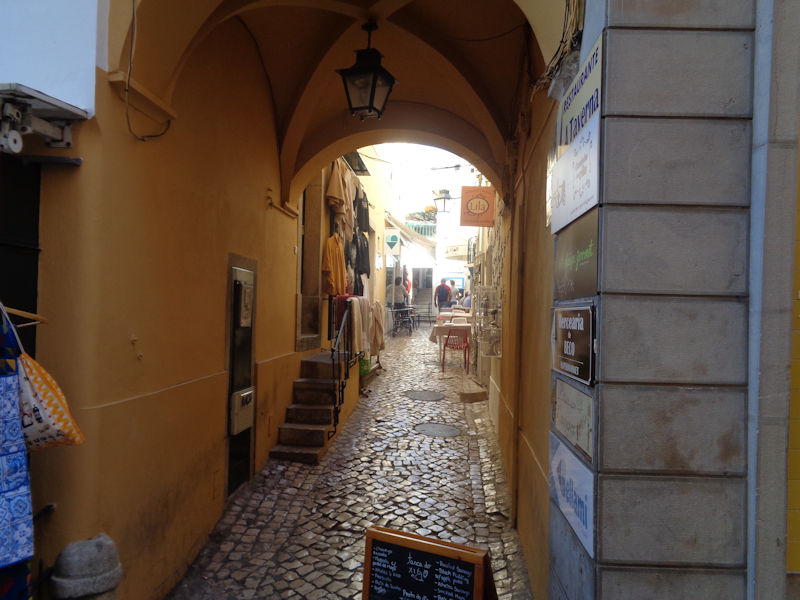
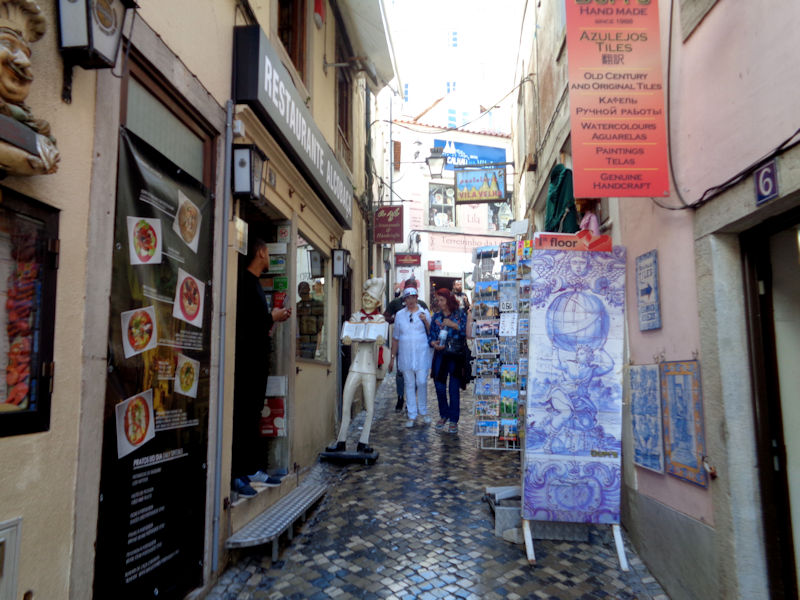
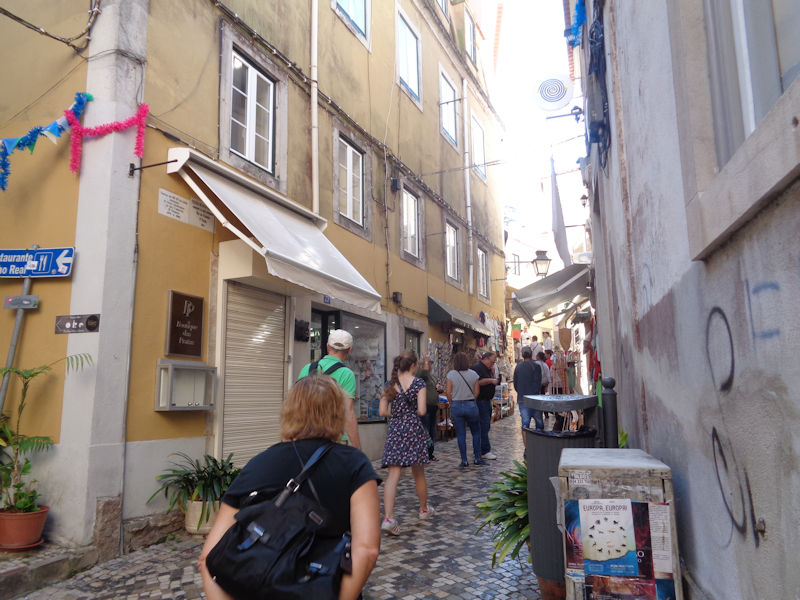
We're here at the end of October -- mid-August might not be so rewarding an experience.
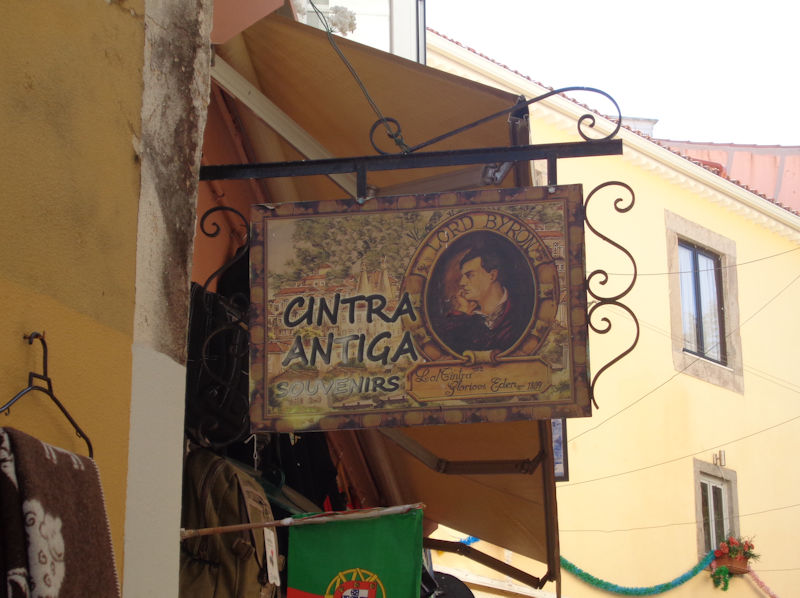
Lord Byron slept here. Really? In Old Cintra? (Yes, really-- in 1809, having missed his boat to Malta. And he waxed enthusiastic about the place in Childe Harold's Pilgrimage, 1811-1818.)

The grand poet has his own snack bar, in fact.

Too crowded at the Royal Pot

The Palácio Valenças, a 'former royal palace from the 15th century'

The Palácio Nacional (with Manuel's Wing to the right of the chimneys)
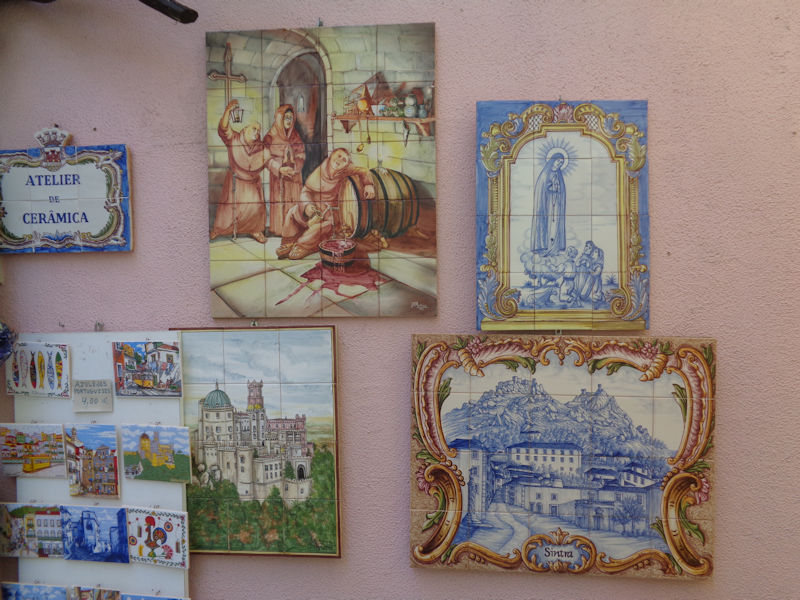
Ceramic tiles for you

Helpful street markings
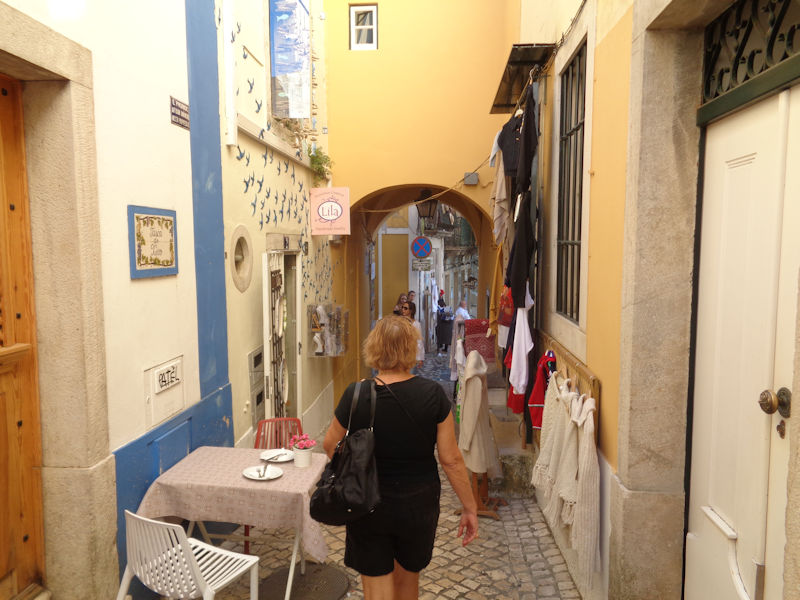
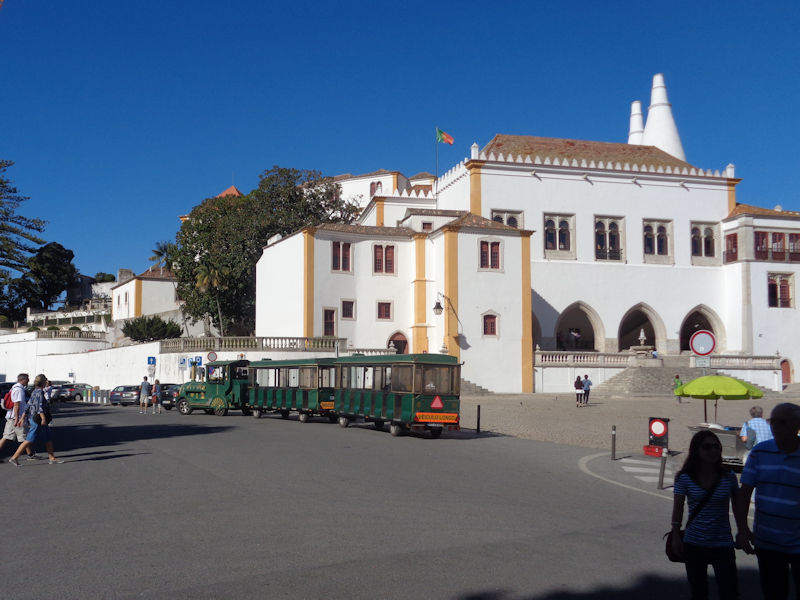
The tourist train is taking a break -- errm, dare we?
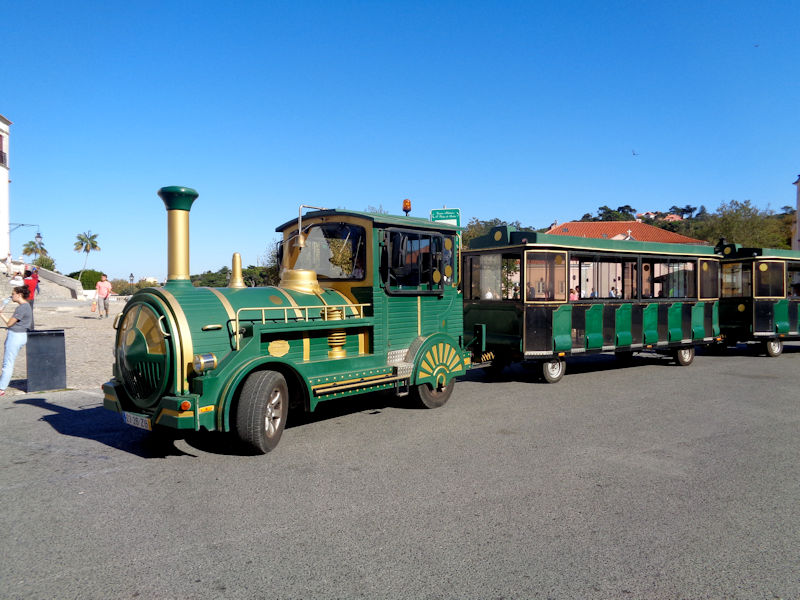
I've been collecting photos of European city tourist trains for years, but only actually been on one once (Toledo, 2012, what a treat -- got to wear the driver's cap).
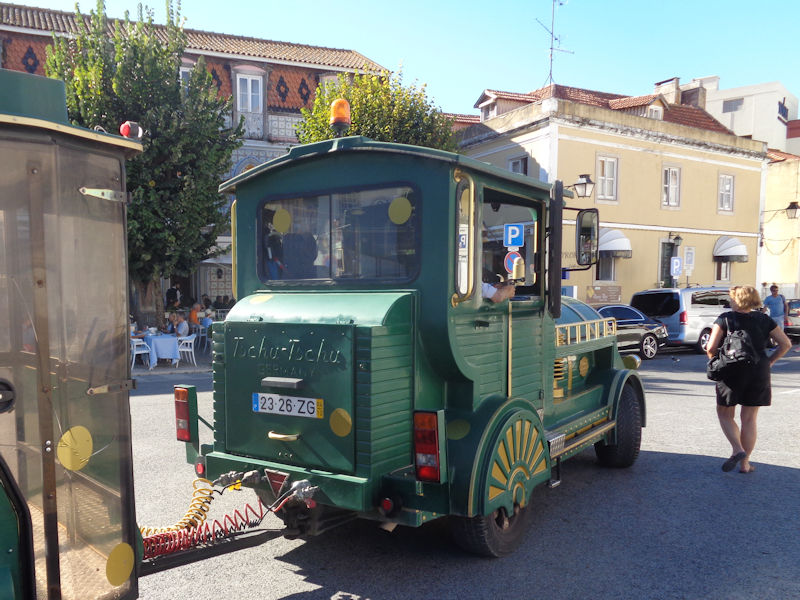
But this is not just any road train -- nearly all European city tourist trains we've found so far, except for those that were homemade, were Dotto Trains from Castelfranco, Italy. The only other widely popular brand is the German Tschu-Tschu (i.e., choo-choo) from Neumarkt in Germany, and so far we've only run into one of those (in Morges, Switzerland). This train ride, however, though inexpensive, was really bad.
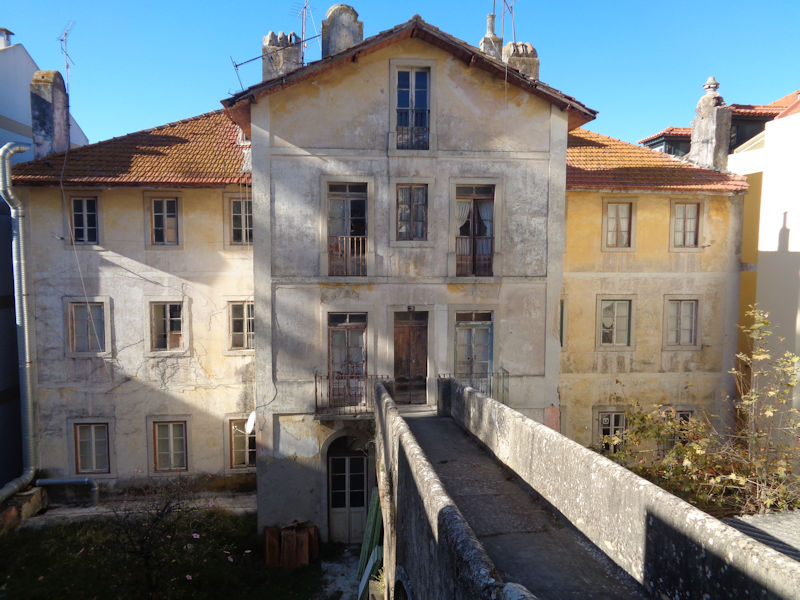
Back to the Sintra rail station in good order, and having just missed our hourly train to the Lisbon Rossio station we brainstormed and took the train to the Lisbon Airport, got off at Entrecampos and caught a subway to the Largo do Rato. Easy-Peasy. (That pleasant view is across the street from the rail station.)








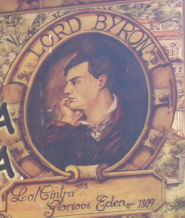 Dwight Peck's personal website
Dwight Peck's personal website































































